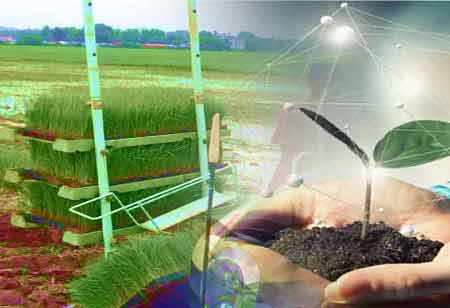Thank you for Subscribing to Agri Business Review Weekly Brief
Enhancing Agricultural Water Quality Management
The importance of water in agriculture cannot be overstated, and water is an essential resource for the growth of plants.

By
Agri Business Review | Monday, January 30, 2023
Stay ahead of the industry with exclusive feature stories on the top companies, expert insights and the latest news delivered straight to your inbox. Subscribe today.
Agricultural products are embracing the latest technology to grow data-driven.
FREMONT, CA: The importance of water in agriculture cannot be overstated, and water is an essential resource for the growth of plants. Indoor agriculture relies on monitoring water quality, and internet of things (IoT) water sensors can enhance crop yields through water quality monitoring.
Agricultural products aren't typically associated with digital or data-driven, but studies show smart farming is gaining traction by applying the latest technology and data. In any agriculture practice, whether vertical farming, precision farming, greenhouse farming, hydroponics, or anything else, one thing is undeniable: Technology, and the IoT in particular, has proven highly useful for creating favorable growing conditions. Consequently, more farmers can maximize crop growth and increase their production capacity.
Cost-effective IoT monitoring is possible. Microprocessor costs have fallen recently, and wireless sensors make installation relatively inexpensive. Companies of all sizes can implement such a system, and the return on investment is usually high.
Monitoring alerts can be sent via text using IoT monitoring systems. A measurement that falls outside the acceptable range will automatically trigger a warning. The system allows you to set the parameters for whatever water quality characteristic you wish to monitor. Consequently, extensive plant damage can be avoided if you act quickly.
As an IoT-based system monitors remotely, it can capture information on whether or not someone is in the building. After sensors collect data, it is sent over the network and to the cloud, where it can be accessed on your computer.
Monitoring water quality is easier and more efficient with IoT systems. The collection of digital data is faster and more efficient, and IoT platforms include advanced analytics programs that can measure, catalog, and analyze data more quickly than humans can.
Monitoring water using IoT water sensors is continuous rather than taking point-in-time measurements. The monitoring process provides near-real-time feedback about your desired sizes.
A wide range of variables can be monitored with IoT water sensors.
Salinity: Water salinity is measured in parts per thousand units of salt. Water is manually analyzed using a chemical analysis process, which is a complex procedure.
Acidity or alkalinity: Monitoring the pH of water is one of the most commonly performed tests to determine its quality. pH levels in water can cause several health problems, which is why it is crucial to manage them.
Total dissolved solids: To determine the amount of total dissolved solids in water, TDS is measured. Living organisms can be harmed by some solids and experience various health issues, and water quality is therefore determined by monitoring and maintaining TDS levels.
Turbidity: Water is turbid when its quality is degraded by suspended particles. Infrared LEDs and photodiodes embedded in IoT-based sensors can measure water turbidity.





